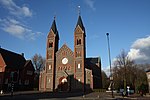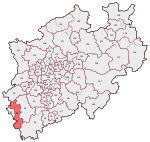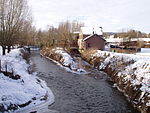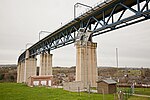Siege of Aachen (1248)
1240s in the Holy Roman Empire1248 in EuropeConflicts in 1248Sieges involving GermanySieges of the Crusades
The siege of Aachen, which lasted from late April or early May until October 1248, was part of the German civil war that began with Pope Gregory IX's proclamation of a crusade against the Emperor Frederick II in 1240. The city of Aachen, which was the traditional coronation site of German kings, supported Frederick II and refused to allow his rival, Count William II of Holland, to enter the city to be crowned. William and his supports besieged the city, forcing it to allow him in, where he was crowned German king. The main primary sources for the siege are the Royal Chronicle of Cologne, the Chronicle of the Monastery of Bloemhof and Matthew of Paris's History of the English.
Excerpt from the Wikipedia article Siege of Aachen (1248) (License: CC BY-SA 3.0, Authors).Siege of Aachen (1248)
Epenerbaan, Vaals
Geographical coordinates (GPS) Address Nearby Places Show on map
Geographical coordinates (GPS)
| Latitude | Longitude |
|---|---|
| N 50.7598133 ° | E 5.9564415 ° |
Address
NL B Grenzstein Grenspaal N° 7
Epenerbaan
6294 NE Vaals
Limburg, Netherlands
Open on Google Maps










